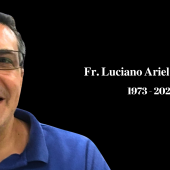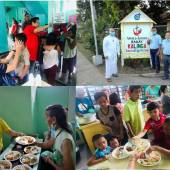People rebuild chapel in four days in southern Philippine
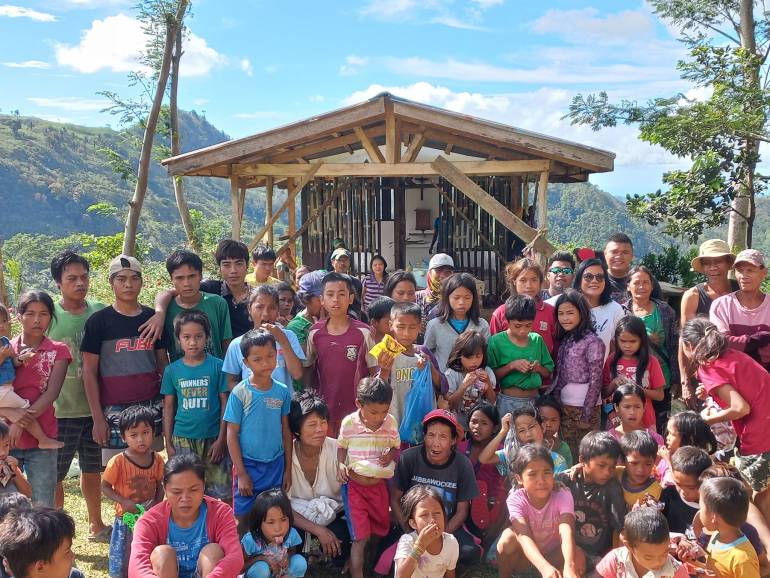
A group of laywomen and men (re)built a chapel for one of the poorest communities in the Zamboanga Peninsula in four days.
It is for the Subanon indigenous group that lives in the mountainous areas of Zamboanga del Norte. The community belongs to the Diocese of Dipolog in the same province, southern Philippines.
“We built the first-ever church in the Subanen Community in Sitio Kibungan (in the mountain areas of Manukan, Zamboanga del Norte) in 2015,” recalled Chrisma Bangaoil, one of the laywomen who was part of the project.
Although made of light materials from the place (except for the roof), it served its purpose for a place of worship then. Soon the team had to extend it because more community members asked to be baptized.
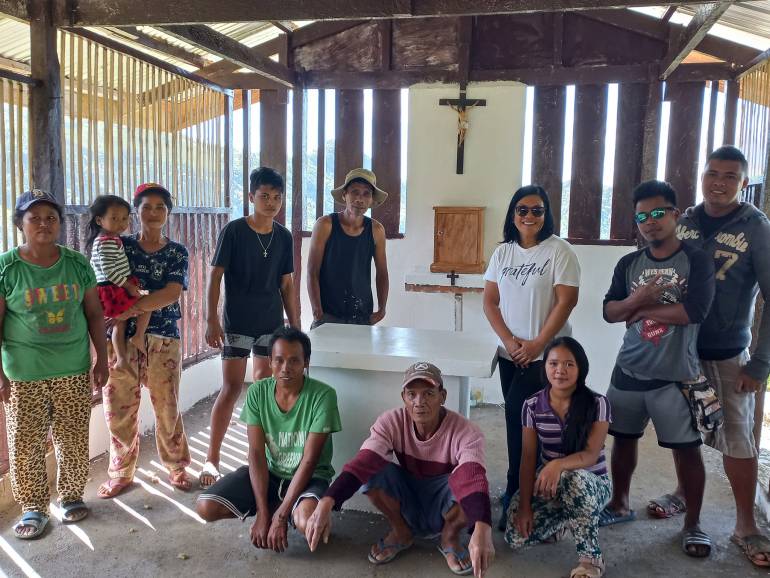
Last November, more than two years, Bangaoil visited the community to keep a promise. The church (more commonly referred to as chapel) was in a poor state—the same previous structure as it was built— with no addition, enhancement, or repairs.
“Worse, I was told that several people have stopped going to church because there have been no regular monthly Masses even before the pandemic and even after health protocols have allowed the celebration of Masses,” she said.
Thankfully, the Sunday celebration without a priest continued.
A month after her visit, she got a visitor from the place. He spoke about their (people’s) desire to repair the chapel.
He asked if Bangaoil and her team could help since he was told to ask for help from the same people who built it.
“We agreed. I gave him the initial money needed and had the materials needed delivered. The cost of the delivery is as much as the materials because of the distance and the extreme danger and difficulty of the road,” said Bangaoil.
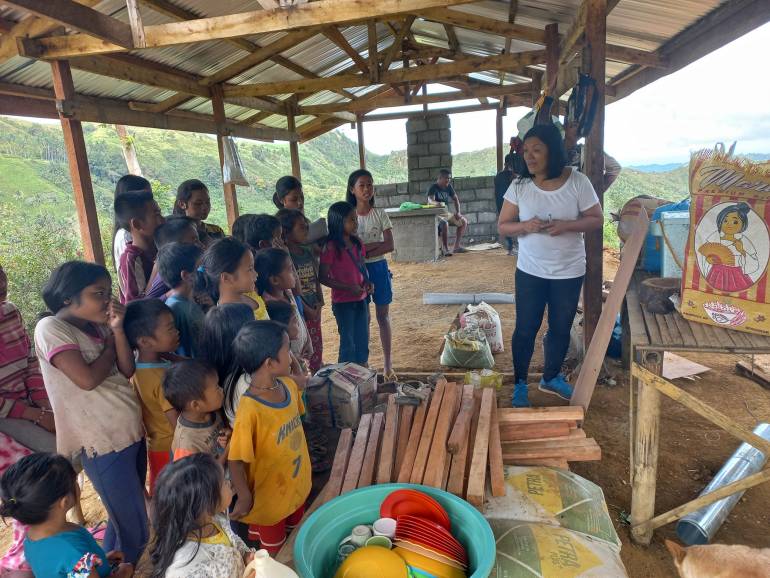
She got pictures of the old chapel in January showing ground zero. They demolished the church except for the extension. By the end of January, she asked a messenger to check the progress of the construction, but there was none. She told him to ask about their challenges.
No one wants to help - because no one knows how.
“So, when I got back from Manila, we decided that I would just go and manage the project not to waste the materials,” she said.
With four carpenters in tow, the team traveled to the place. They left Piñan of the Diocese of Dipolog at 5 am and arrived at the destination at 8 am.
“We had to get off the motorcycle several times because of the road situation,” said Bangaoil, a committed lay missionary.
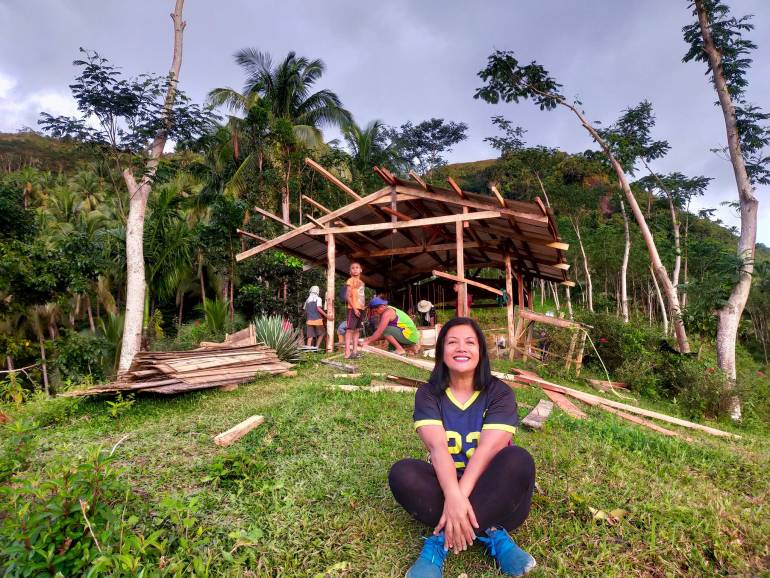
She is also a catechist and professor at the Dominican-run University of Santo Tomas, Manila.
Work started as soon as the team got there, with some children and adults helping. More people came to assist in the succeeding days.
On the third day, some 25 children and 20 adults assisted. Many other younger children were playing, and mothers nursing babies and older adults watched.
“We only stopped the work to eat. I cooked all three meals a day with three women assisting while it was still dark. As soon as we woke up at 5 am, we started working again,” Bangaoil said.
According to her, the team finished the roof and the concrete altar table and the concrete perimeter base for the wall on day 1.
On day 2, they erected the concrete altar wall and the fascia boards. On day 3, they finished the altar table and altar wall and started painting the purlins; installed 60% of the wood and bamboo grills and the tabernacle stand.
“On day 4, we continued painting the purlins, the wood grills, the altar table, and the altar wall and paved the floor. We installed the new tabernacle, finished installing all the bamboo grills, and changed the pillars of the old extension. We moved the structure to align it with the new structure,” she said.
As they were painting the church, Bangaoil witnessed the amazement of people.
Most of them are seeing and smelling paint for the first time (actually, even cement because there's not even a small piece of concrete in the place).
At 3 pm on Day 4, they built (re)built the church and repaired the extension.
“We prayed before meals and recited Amahan Namo (Our Father), Maghimaya ka Maria (Hail Mary), and our Cebuano version (because I can't memorize it) of Angel of God while working so they get to memorize the prayers,” Bangaoil said.
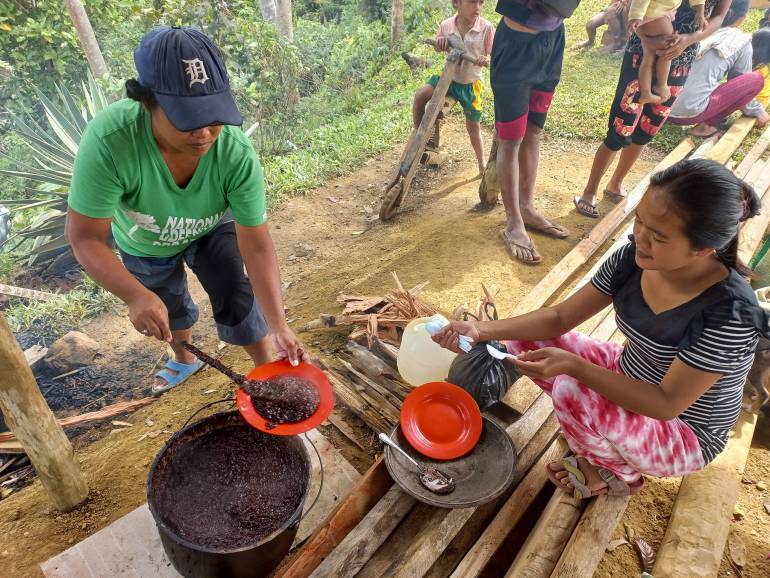
The church is small - only about 4 meters by 10 meters - only about 25% of it is concrete. But unlike the old structure that's 80% bamboo, 10% wood, and 10% galvanized iron, the new church is 60% wood, 5% bamboo, and 10% superplume roof.
Also, suppose one gets to see the travel, the transport of materials, the route to the river to get sand, the manual quarrying in the river (no river bank), the people, and the meager budget we have. In that case, one could undoubtedly exclaim, 'God's grace suffices, sustains, provides and protects.'
“We just have to say, ‘yes’ for the mission of God—no ifs and buts; no later, no tears, no fears; only joy and love for people and God,” Bangaoil said.
Radio Veritas Asia (RVA), a media platform of the Catholic Church, aims to share Christ. RVA started in 1969 as a continental Catholic radio station to serve Asian countries in their respective local language, thus earning the tag “the Voice of Asian Christianity.” Responding to the emerging context, RVA embraced media platforms to connect with the global Asian audience via its 21 language websites and various social media platforms.









